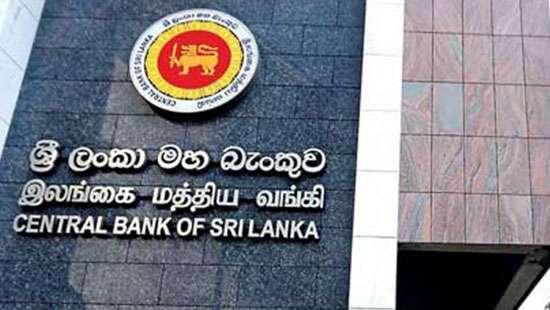Reply To:
Name - Reply Comment

The Central Bank yesterday ordered the licensed banks to surrender 25 percent of the foreign currency they receive from a variety of sources on a weekly basis, raising the hitherto prevailed requirement of 10 percent and 20 percent in certain cases.
The rule, which comes into immediate effect starting from yesterday, will require the banks to sell 25 percent of the foreign currency they collect from the conversions made by the exporters and as worker remittances.
The earlier requirement was to sell 10 percent of the conversions made by each every month.
The Central Bank earlier said the exporter proceed rule, which came into effect from October 1, has delivered the desired results with enhanced repatriations.
It also said the Rs.10 incentive scheme, which was extended till end-January 2022, has lured more migrant workers to choose banking channels to send their earnings.
Central Bank Governor Ajith Nivard Cabraal last week said the monthly export proceed repatriations of US $ 500 million seen in October had more than doubled to US $ 1,100 million in November.
Meanwhile, the new rule also ordered the banks to sell 25 percent of the hard foreign currency brought into the system and converted at a higher exchange rate, as part of the Central Bank’s newest scheme to woo foreign currency notes, up from the existing 20 percent requirement.
The Central Bank offered an additional Rs.10 above the formal exchange rate of Rs.200 for each dollar note converted, deposits placed and investments made in Sri Lanka Development Bonds using dollar currency notes or any other foreign currency from December 13, through
December 31, 2021.
As part of the six-month road map unveiled on October 1 to stabilise the economy, the Central Bank announced plans to buy up to US $ 150 million and US $ 250 million each during its first three months from the exporter proceeds and worker remittances.
But the latest tweak to the rule could enhance such purchases of foreign currency made from the two sources, which are broadly identified as ‘non-debt-creating inflows’, to rebuild the reserves. Sri Lanka’s external reserves fell to a new depth of US $ 1.6 billon, barely sufficient to cover a month’s imports by end-November.
But Cabraal has vowed to end the year with a minimum of US $ 3.0 billion in reserves and honour all foreign currency-denominated liabilities falling due next year.